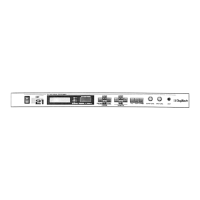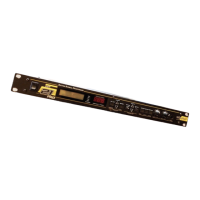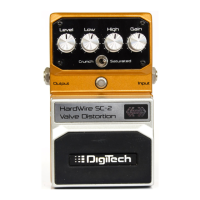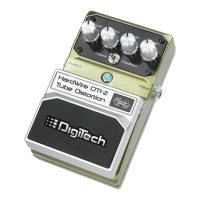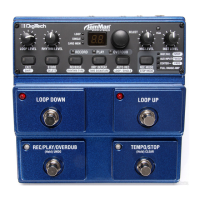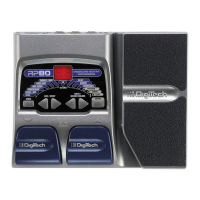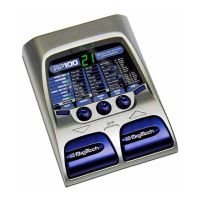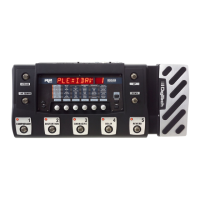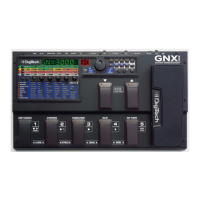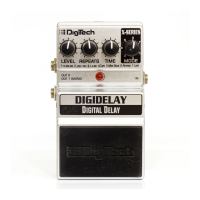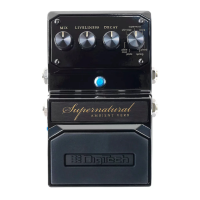34
The only difference between choruses and flangers is that flangers use less delay and have a feedback Parameter that
sends a portion of the effected signal back to the input of the Module.When the effected signal reaches the input, it is
sent through the Module again, building thickness and depth. If you increase the feedback enough, the source begins to
lose its own original pitch to the dramatic pitch modulation of the feedback loop.
LFO Waveforms: There are four LFO waveforms available for Choruses, Flangers, Phasers,Tremolos,Auto Panners,
and five for Modifier LFOs.They include SINe,TRIangle, SPecial-1, SPecial-2, and SPecial-3. See figure 4-2 for examples
of what these waveforms look like.
Figure 4-2 LFO Types
CHORUS
Chorus is probably the most basic modulation effect. It is really just a very small delay whose time is always changing.
As the time is varied, the delayed signal's pitch changes (just like a tape recording's pitch raises when you play it
faster). By moving the time back and forth, you hear a sound that goes in and out of tune. When combined with the
original sound, it almost sounds like more than one instrument is playing.The 2112 uses several choruses at once to
make huge rich sounds. For example, the octal chorus uses eight chorus voices at once to create an incredible ensem-
ble of sound. Aside from the more obvious speed and depth parameters (which adjust respectively how fast and far
the sound goes out of tune), the 2112 allows you to use different waveforms.The waveform defines how it will move
in and out of tune.The triangle waveform is very popular for slow, shallow chorus settings, while the sine waveform
works nicely for faster, deeper settings.
WHEN DO I USE CHORUS? The Chorus effect is so vast in applications, an easier question would probably
be “When can’t I use a Chorus.When playing the Blues, turn the Speed and Depth parameters up to produce an
almost Lezlie-Type effect When trying to obtain “Big” rock guitar tone, use the Chorus to thicken-up and add
depth to your sound.And, any time your using a clean tone program, guitar always sounds so lush when chorus is
added.
CHORUS PARAMETERS:
FX: Lvl Controls the signal input level fed to the Module. Ranges from Off to 100%.
Dry: Lvl Controls the level of the dry (uneffected) signal. Ranges from Off to 100%.
Balance Controls the left/right positioning of the dry signal in the stereo soundfield. Ranges from -
99 (all left) to 99 (all right).
Speed Controls the Low Frequency Oscillator (LFO) speed of the chorus. Ranges from 0.06 to
16.0 Hz.
Depth Adjusts the intensity of the chorus effect. High settings produce dramatic modulation, while
lower settings can be used to produce a more subtle, ambient swirling. Ranges from 0 to 30
milliseconds.
Depth 1 - 2 DEPTH1 adjusts the intensity of chorus voices 1-4. DEPTH2 adjusts the intensity of chorus
voices 5-8. Ranges from 0 to 30 milliseconds.
Wander Speed Controls the secondary LFO speed of chorus voices 5-8.This is a secondary oscillator for
voices 5-8 that causes deviations from the oscillation path set by DEPTH2.This control can
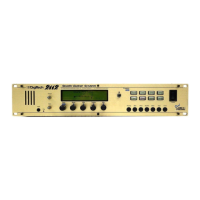
